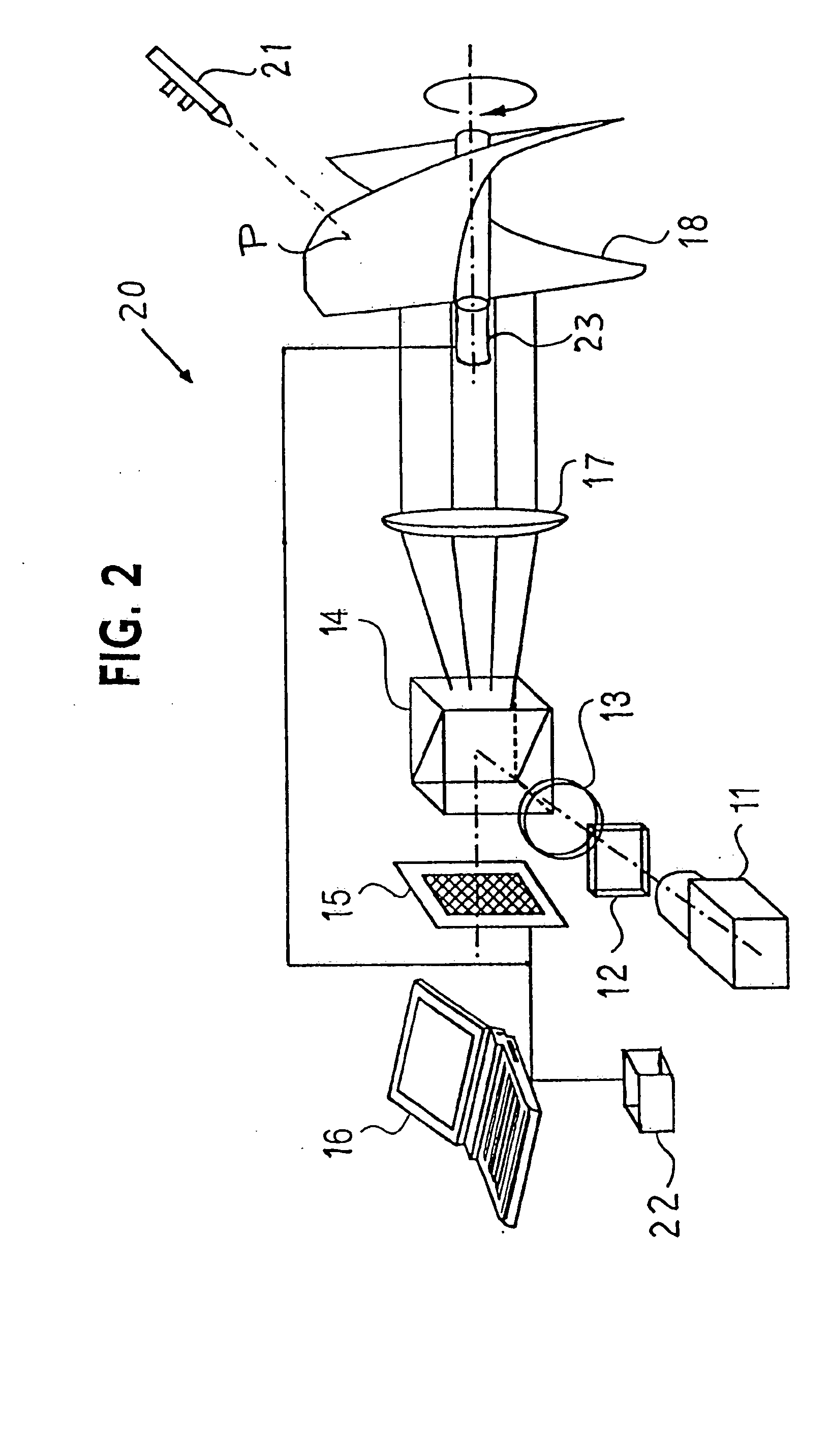Method and apparatus for an interactive volumetric three dimensional display
a volumetric three-dimensional display and high-resolution technology, applied in the field of methods and apparatus for a high-resolution volumetric three-dimensional display, can solve the problems of limited voxels, scale-up capability and color capability, and the inability to produce a practical useful 3d display using this approach
- Summary
- Abstract
- Description
- Claims
- Application Information
AI Technical Summary
Benefits of technology
Problems solved by technology
Method used
Image
Examples
Embodiment Construction
Referring now to FIG. 1, a SLM / Helix 3D display system 10 that involves the use of a rotating helical screen that continuously sweeps out a cylindrical volume that becomes a 3D display space is disclosed. A complete discussion of the SLM / Helix 3D display system 10 is disclosed in U.S. Pat. No. 6,064,423, the contents of which are herein incorporated by reference in its entirety.
In general, the SLM / Helix 3D display system 10 includes a projector 11 that produces light rays that pass through a UV and IR cut-off filter 12 and a collimating lens 13 that impinge on a polarizing beamsplitter cube 14 (commonly known as a beamsplitter). Due to the polarization characteristics of the beamsplitter cube 14, the polarized light rays are reflected by the beamsplitter cube 14 and projected onto a spatial light modulator (SLM) 15. A host computer 16 generates the image data shown on the SLM 15. The SLM 15 is able to alternate image patterns at a high frame rate (over 3,000 frames per second, fo...
PUM
 Login to View More
Login to View More Abstract
Description
Claims
Application Information
 Login to View More
Login to View More - R&D
- Intellectual Property
- Life Sciences
- Materials
- Tech Scout
- Unparalleled Data Quality
- Higher Quality Content
- 60% Fewer Hallucinations
Browse by: Latest US Patents, China's latest patents, Technical Efficacy Thesaurus, Application Domain, Technology Topic, Popular Technical Reports.
© 2025 PatSnap. All rights reserved.Legal|Privacy policy|Modern Slavery Act Transparency Statement|Sitemap|About US| Contact US: help@patsnap.com



